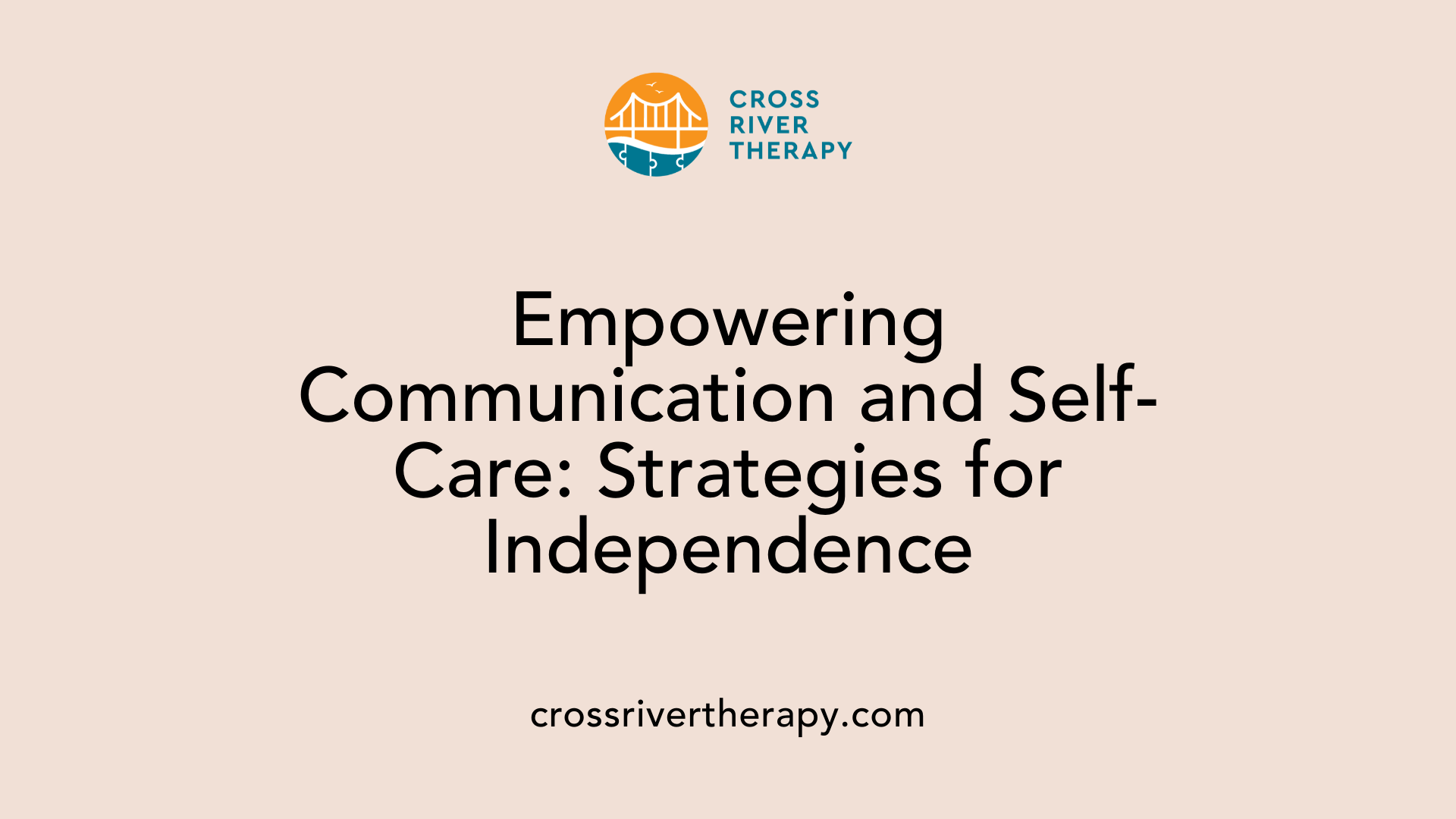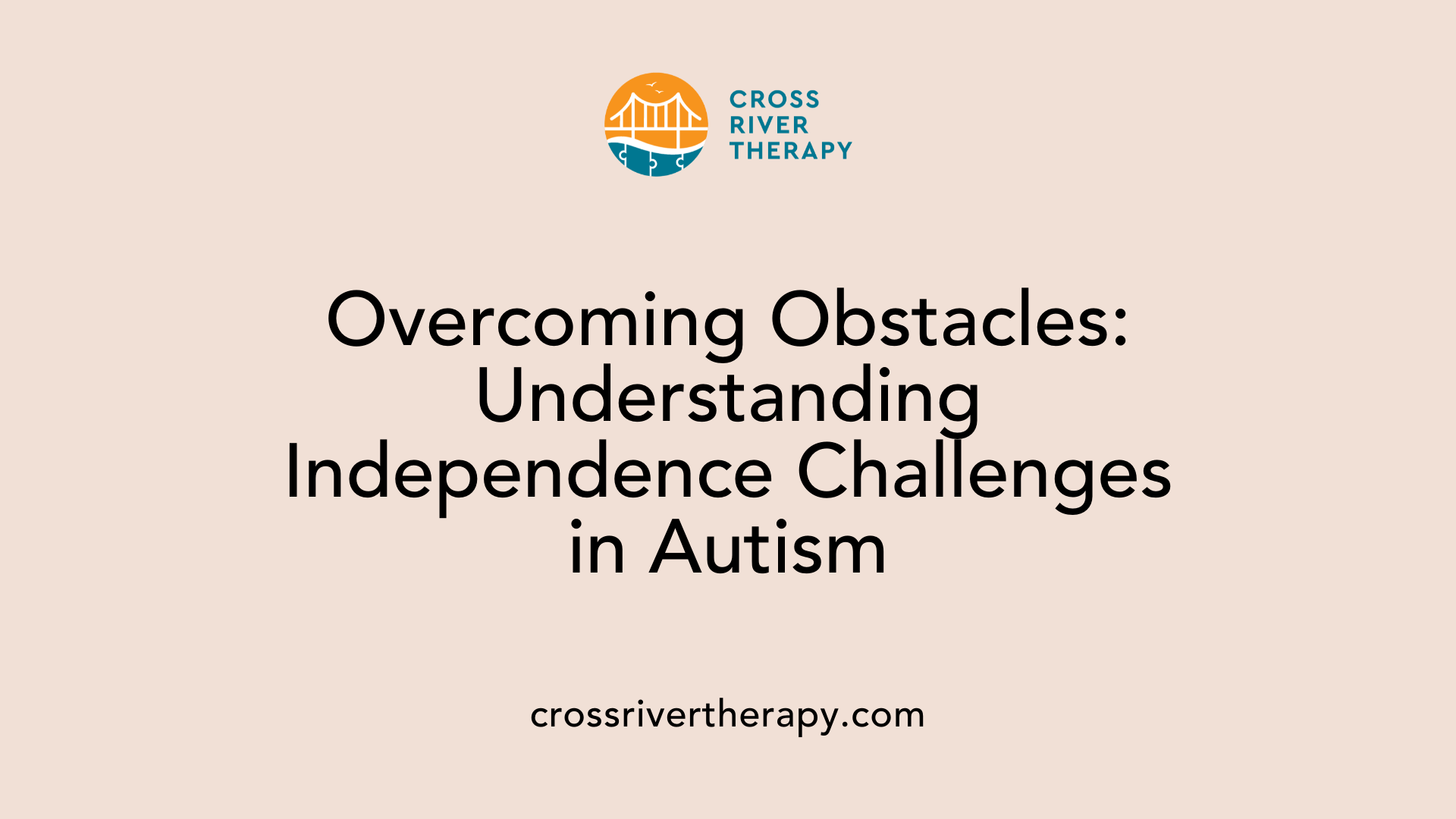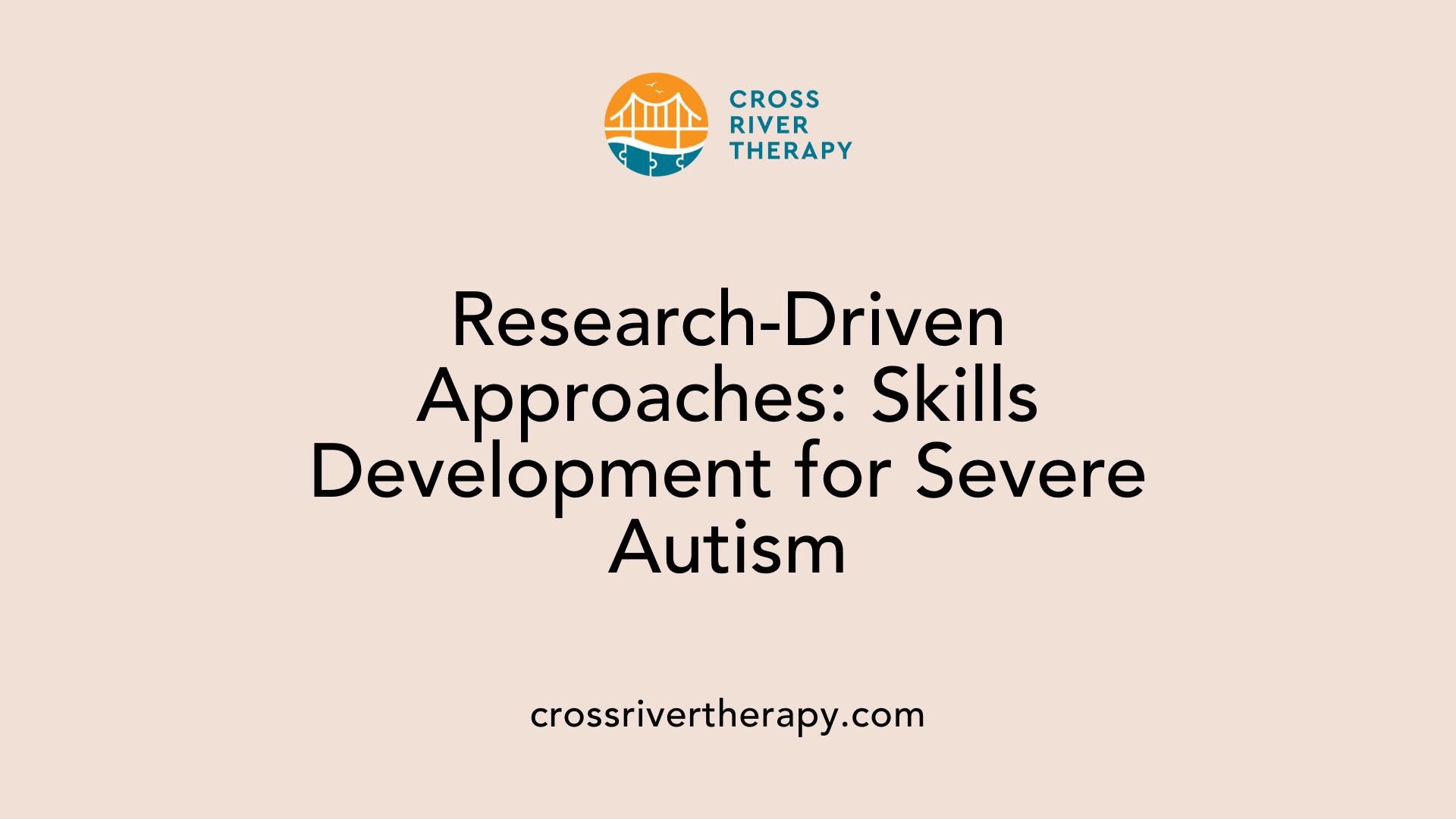Teaching Independence in Autism
Empowering Autistic Individuals: Strategies for Fostering Independence
Introduction
Encouraging independence in individuals with autism involves a multifaceted approach that combines teaching essential life skills with innovative communication strategies. Parents, educators, and caregivers play crucial roles in equipping autistic individuals with the tools necessary to navigate everyday life. By focusing on communication, self-care, and vocational training from an early age, autistic individuals can achieve a higher level of autonomy, ultimately enhancing their quality of life. This article explores effective methods to promote independence, tailored to the unique needs of individuals with autism spectrum disorder (ASD).
Encouraging Communication and Self-Care Skills

Strengthening Communication
Building independence in children with autism begins with enhancing their communication skills. Utilizing tools such as Alternative/Augmentative Communication (AAC) systems not only improves their ability to express needs and feelings but also fosters greater autonomy. Visual supports, like picture communication boards or voice output devices, can facilitate understanding and enable children to interact effectively in their environment.
Self-Care Skills
Teaching self-care routines, including brushing teeth and dressing, plays a crucial role in promoting independence. Children can benefit significantly from structured approaches, such as using visual schedules and checklists. These aids break down tasks into smaller, achievable steps, making it easier for children to grasp what they need to do. Starting these lessons early, coupled with positive reinforcement, helps carve out robust self-care habits that will last a lifetime.
Using AAC Systems
Implementing AAC systems allows children not only to communicate their desires but also to request breaks or help when needed. This is particularly important for managing sensory experiences and emotional regulation. A simple strategy could include pressing a button on a communication device to signal a need for a break, which empowers children to take charge of their own self-regulation.
Encouragement for Independent Play
To encourage independent play in children with autism, create a designated area filled with engaging toys aligned with their interests. Introducing activities with clear objectives helps children achieve success and build confidence. Skills can be reinforced with visual timers to help manage play durations. Regularly rotating toys adds variety, ensuring the playtime experience stays stimulating and enjoyable.
Building Life Skills through Structured Teaching

What are effective strategies for promoting independence in children with autism?
Promoting independence in children with autism relies on effective strategies that are customized to each child's unique needs. Teaching life skills is paramount, with an emphasis on self-care, household responsibilities, money management, and basic cooking skills. Here are some strategies that are particularly effective:
- Hands-On Instruction: Demonstrating tasks like laundry, meal preparation, or budgeting, followed by practice opportunities, enables children to gain confidence and competence.
- Use of Visual Aids: Implementing visual supports like checklists and schedules can simplify complex tasks. These tools help children understand and manage their daily routines more effectively.
- Structured Teaching: By introducing structured systems for task sequencing, such as breaking down chores into manageable steps, children can gradually take on more responsibility. Task analysis ensures that children are learning systematically.
- Vocational Training: Starting around age 14, integrating vocational training into educational plans equips children with the practical job skills necessary for independence. Programs that align with their strengths and interests can foster motivation and job readiness.
- Participation in Independent Living Programs: These programs provide essential teaching for managing daily life and can address social communication challenges, thus enhancing overall independence.
By applying these approaches consistently, children with autism can achieve greater independence and self-esteem, setting the foundation for successful transitions to adulthood.
Instructional Strategies for Independent Living
What are some instructional strategies for teaching independent living skills to children with ASD?
Teaching independent living skills to children with Autism Spectrum Disorders (ASD) requires thoughtful and tailored approaches. One effective strategy is to individualize the curriculum based on each child's specific abilities and challenges. This personalization ensures that the teaching methods align with their unique learning styles and needs.
Visual Supports play a significant role in enhancing learning. Utilizing checklists and visual schedules can help children understand and complete tasks independently. These tools break down complex processes into manageable steps, allowing for clearer comprehension and execution.
Another crucial strategy is practicing skills in real-world contexts. Engaging children in activities such as grocery shopping or cooking in real situations reinforces their learning and prepares them for independence. This hands-on experience is vital for solidifying the skills taught.
Additionally, techniques such as prompting—where assistance is gradually faded—and shaping—where skills are taught in successive approximations—can be effective in facilitating skill acquisition. Both strategies encourage children to tackle tasks independently over time, boosting their confidence and self-reliance.
Furthermore, including decision-making exercises within the training can empower children. Allowing them to make choices during lessons fosters autonomy and reinforces their capacity to practice self-advocacy.
In summary, blending personalized teaching strategies with practical applications, visual aids, and decision-making opportunities can significantly enhance the teaching of independent living skills for children with ASD.
Understanding the Challenges and Barriers

Why do autistic individuals struggle with achieving independence?
Individuals with autism often face significant challenges related to executive functioning. These challenges hinder their ability to manage time, prioritize tasks, and organize information effectively. Consequently, they may find it difficult to apply learned skills in new or varied contexts, leading to ineffective generalization of these skills.
Executive functioning challenges
Deficits in executive functioning manifest as difficulties in planning, flexible thinking, and self-monitoring. For example, a child may master the skill of brushing their teeth at home but struggle to perform the same task when visiting a friend or in a different setting. This inconsistency can create barriers that prevent them from achieving full independence.
Generalization of skills
The ability to transfer knowledge from one situation to another is crucial for independence, yet many autistic individuals find this exceptionally challenging. They may excel in structured environments but struggle to apply those skills when faced with unexpected changes or social nuances. Understanding and addressing these barriers is essential for fostering greater independence.
Environment Adjustments for Independence
How can environmental adjustments aid in the independence of autistic individuals?
Environmental adjustments play a pivotal role in fostering independence among individuals with autism. By creating structured environments, we can significantly enhance their daily living skills and overall autonomy.
One of the most effective tools is the use of visual schedules. These schedules help individuals understand their daily routines, manage transitions between activities, and promote decision-making. As children become familiar with visual supports, they gradually reduce their dependency on prompting, ultimately fostering their ability to complete tasks independently.
Teaching self-care skills is another critical aspect. Early lessons on personal hygiene, dressing, and household responsibilities build confidence and self-sufficiency. For example, mastering the art of brushing teeth and grooming contributes directly to their ability to manage personal care as they transition into adulthood.
Furthermore, instilling community safety skills is vital. Teaching children about safety rules and navigation skills ensures they understand how to interact with their environment responsibly. Activities such as role-playing pedestrian safety and practicing public transport use can empower them to explore their communities more confidently.
Overall, fostering a supportive environment through structured adjustments can make a substantial difference in aiding autistic individuals' journey toward independence.
Research-Backed Strategies for Severe Autism

What research-backed strategies exist for developing independence skills in individuals with severe autism?
Research-backed strategies for fostering independence in individuals with severe autism incorporate several key elements:
Three-Step Approach: This involves assessing abilities, utilizing visual aids during instruction, and engaging in realistic practice scenarios. This method ensures that skills are not only learned but also applied in everyday contexts.
Life Skills Training: Training should take place in environments that closely resemble real-life situations. Focus areas include:
- Self-Care: Brushing teeth, personal grooming.
- Cooking: Preparing simple meals in a kitchen setting.
- Money Management: Handling transactions in store environments.
- Transportation: Practicing safety and navigation skills.
Visual Supports: Tools like visual schedules and checklists help break tasks into manageable steps. This enhances comprehension and facilitates independent task completion.
Community-Based Skills Assessment: Starting from age 12, this framework guides skill development tailored to community settings, encouraging participation and social integration.
Structured Programs: Initiatives like "Surviving and Thriving in the Real World" specifically target essential living skills through guided practice and support. This structured learning environment promotes confidence and helps build a repertoire of adaptive behaviors.
Routine Practice: Regular practice of daily tasks reinforces skills. Encouraging individuals to participate actively in their routines fosters independence in a supportive manner.
By implementing these strategies, individuals with severe autism can enhance their independence, equipping them with the necessary skills for daily living.
Transitioning to Independent Living

What frameworks and approaches assist in the transition to independent living for individuals with autism?
To facilitate the transition of individuals with autism to independent living, a variety of frameworks and approaches can be used, focusing on essential skill development. Life skills education plays a significant role, covering crucial areas such as:
- Safety: Understanding how to navigate public spaces safely.
- Hygiene: Mastering personal care routines.
- Self-medical care: Managing health needs independently.
- Food preparation: Learning to prepare simple meals.
- Household management: Handling chores and upkeep.
- Financial literacy: Understanding budgeting and spending.
- Transportation: Navigating public transportation systems.
- Employability: Preparing for job applications and interviews.
Tools such as the Life Skills Checklist and Community-Based Skills Assessment provide structured ways to assess individual abilities and track progress over time. These tools help in creating personalized growth plans that are responsive to each individual's needs.
Incorporating Real-life Practice
Implementing teaching strategies that include visual supports and opportunities for practice in realistic settings is crucial. Engaging learners in community activities and real-world scenarios where they can apply their skills promotes retention and boosts confidence. For example, practicing grocery shopping can help children understand budgeting while simultaneously developing their self-care skills.
Ultimately, these frameworks emphasize a gradual and individualized approach to skill development, nurturing confidence and fostering independence in individuals with autism as they transition to adulthood.
Conclusion
Teaching independence to individuals with autism is a journey that involves the commitment of families, educators, and support networks. By embracing personalized teaching methods, fostering communication, and gradually building life skills, individuals with autism can enjoy a fulfilling and autonomous life. The strategies outlined in this article offer a way forward, ensuring that independent living becomes an achievable goal for all individuals on the autism spectrum. With the right supports in place, they can transcend limitations and take charge of their lives, bolstering their self-esteem and contributing meaningfully to their communities.
References
- Ten Ways to Build Independence | Autism Speaks
- PFA Tips: 10 Ways to Build Independence - Pathfinders for Autism
- I Can Do It Myself Using Work Systems to Build Independence: Articles
- [PDF] Promoting Independence for Individuals with Autism Spectrum ...
- Independent Living & Autism: Teach Skills to Help Your Child
- Life skills for autism | Autism Speaks
- How can I help autistic pupils develop more independence in ...
- Teaching Tuesday: Increasing Independence for Students With Autism



